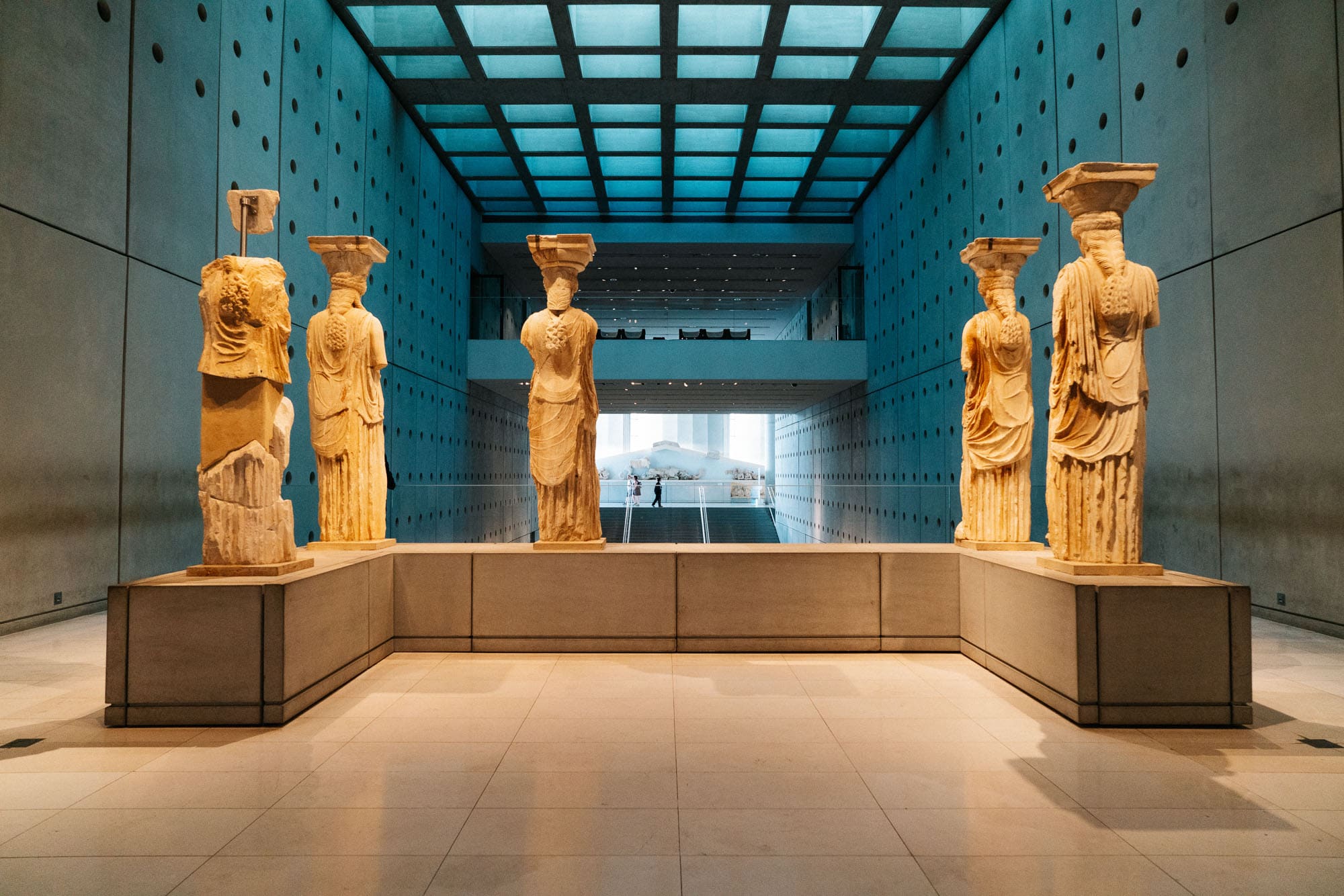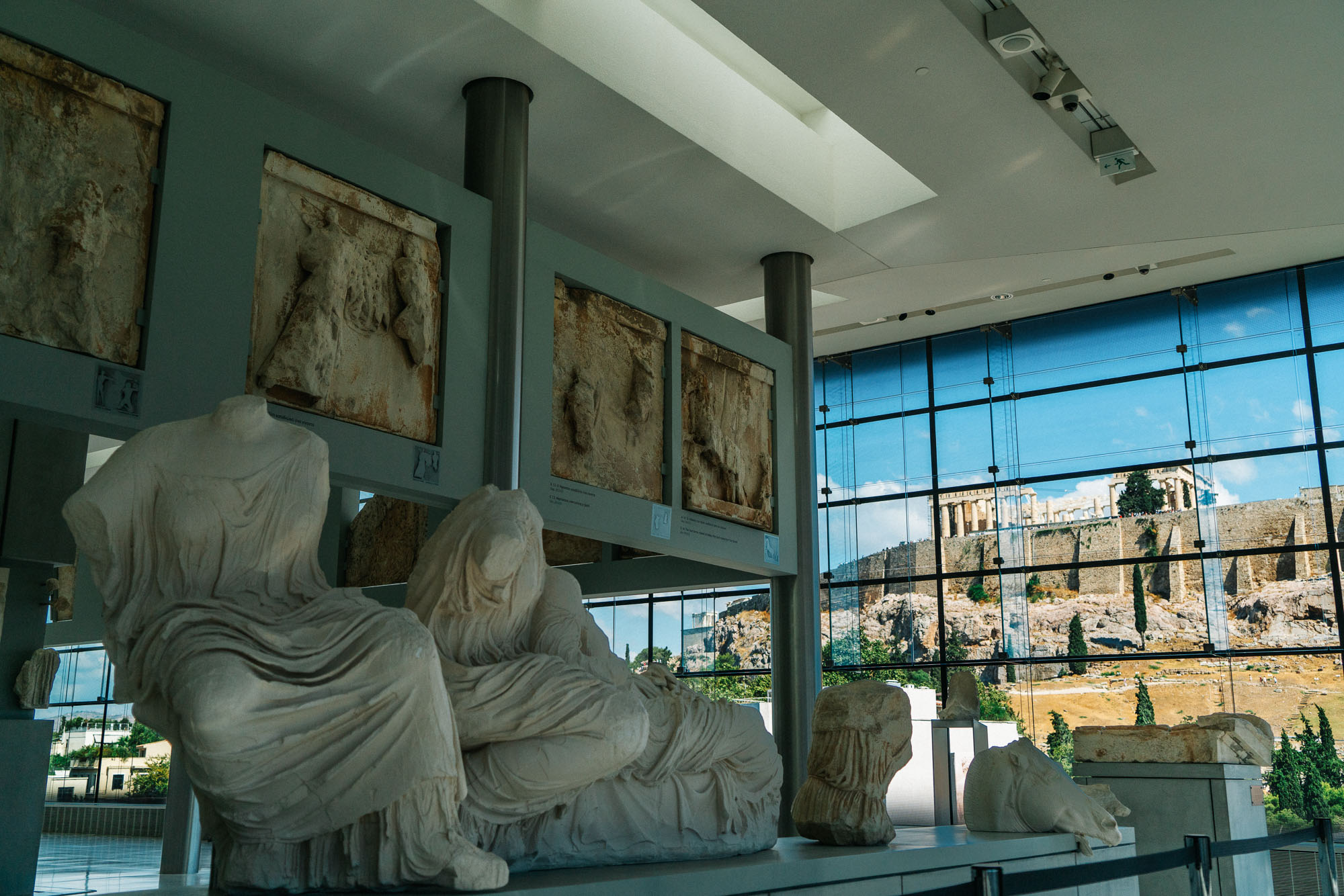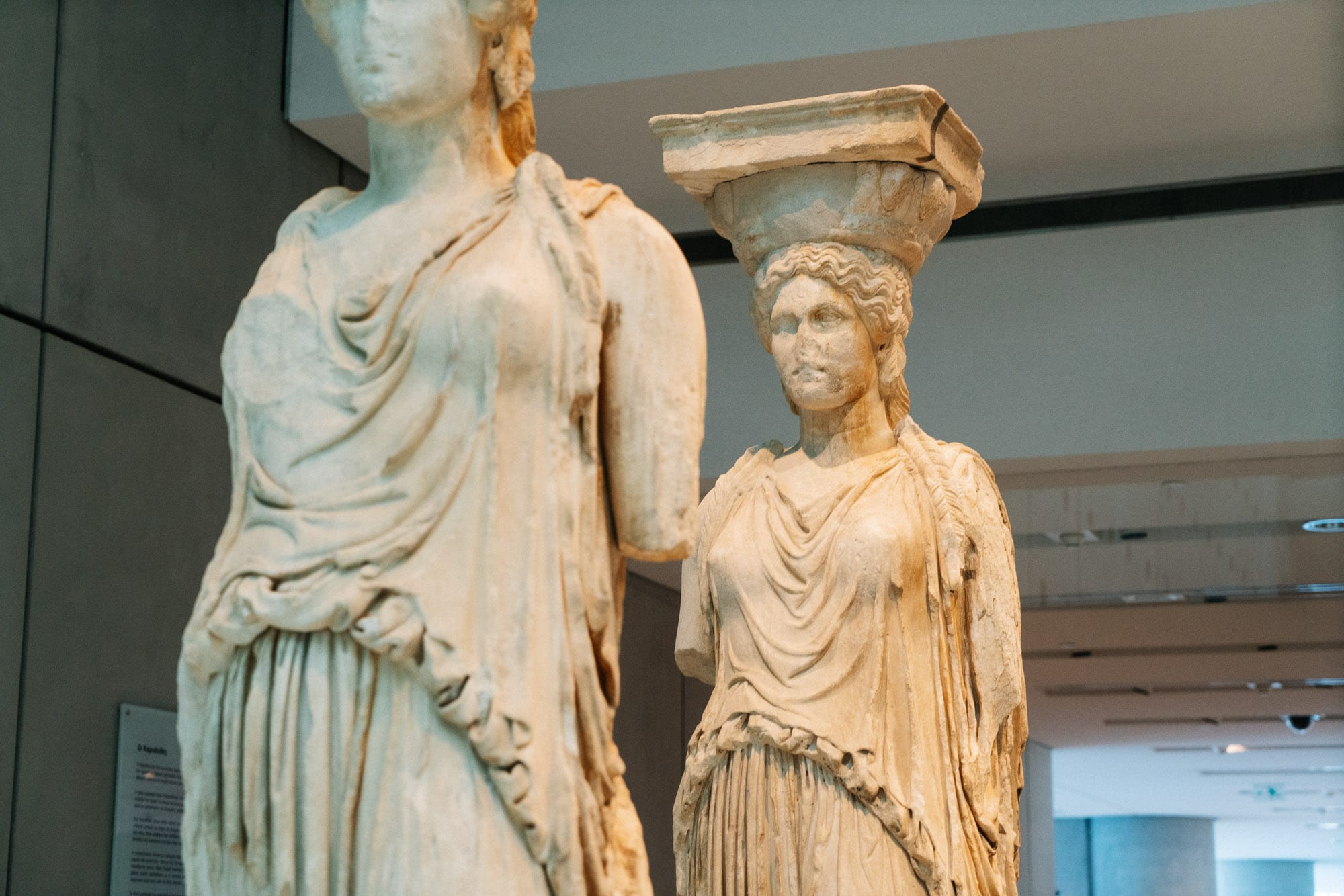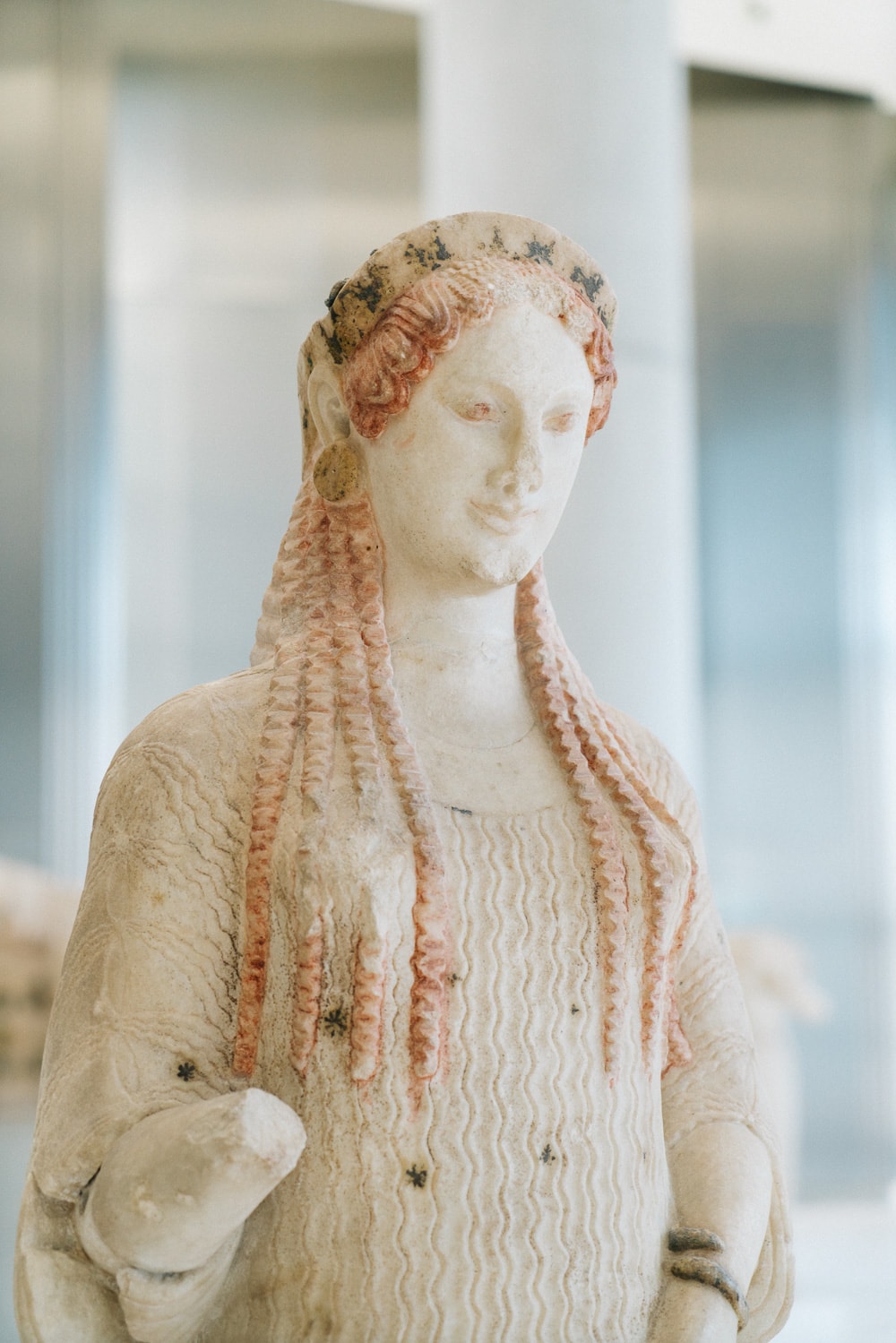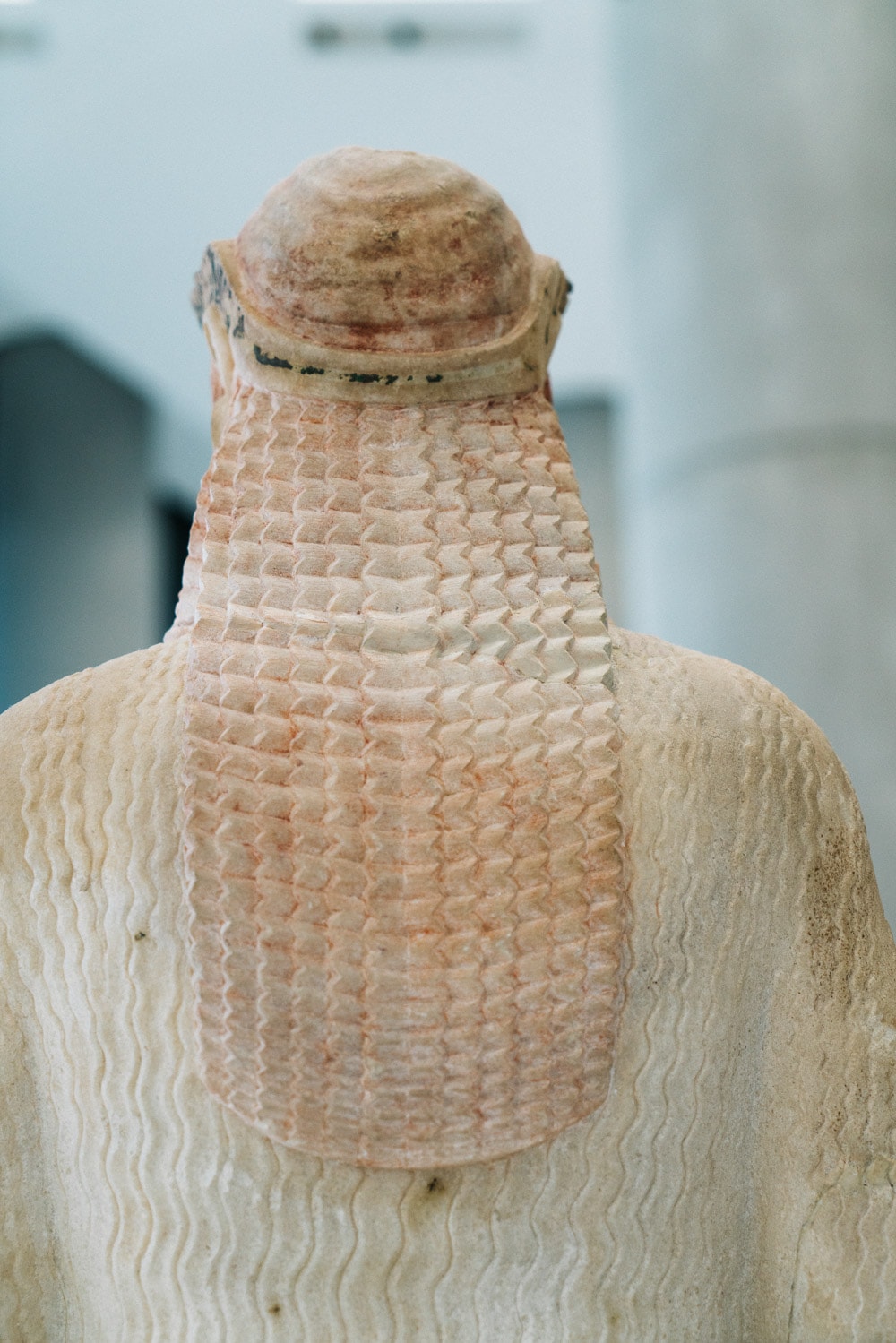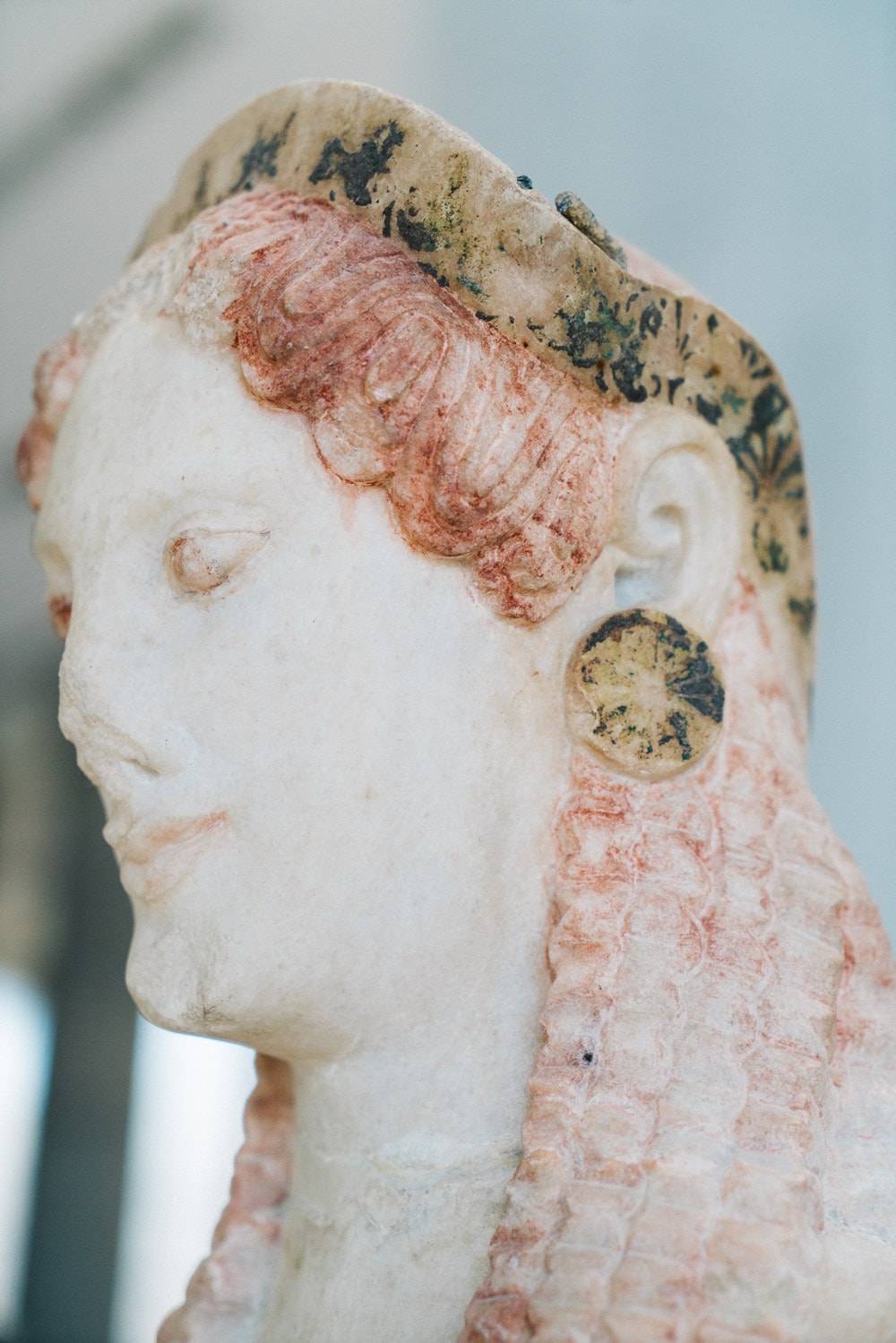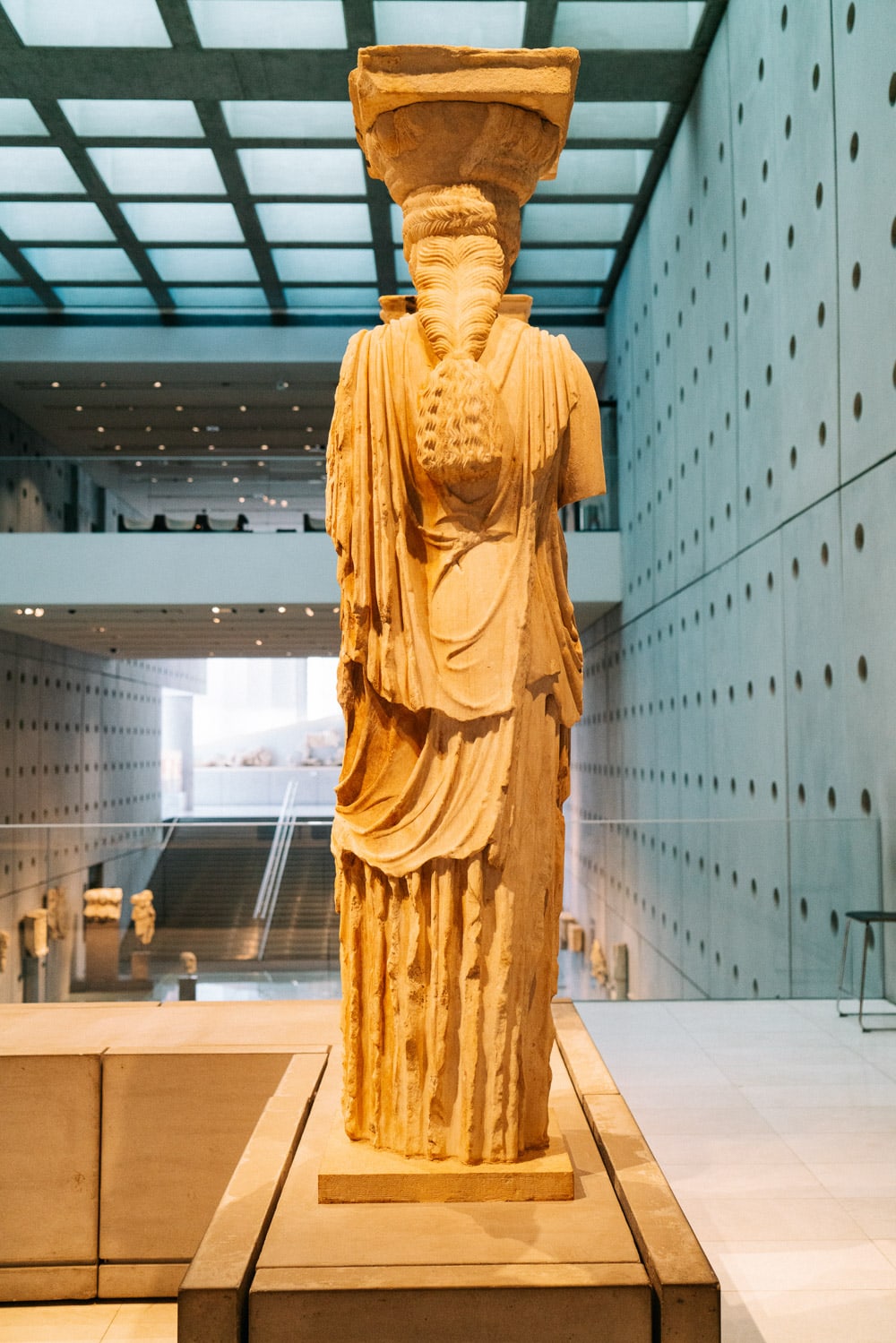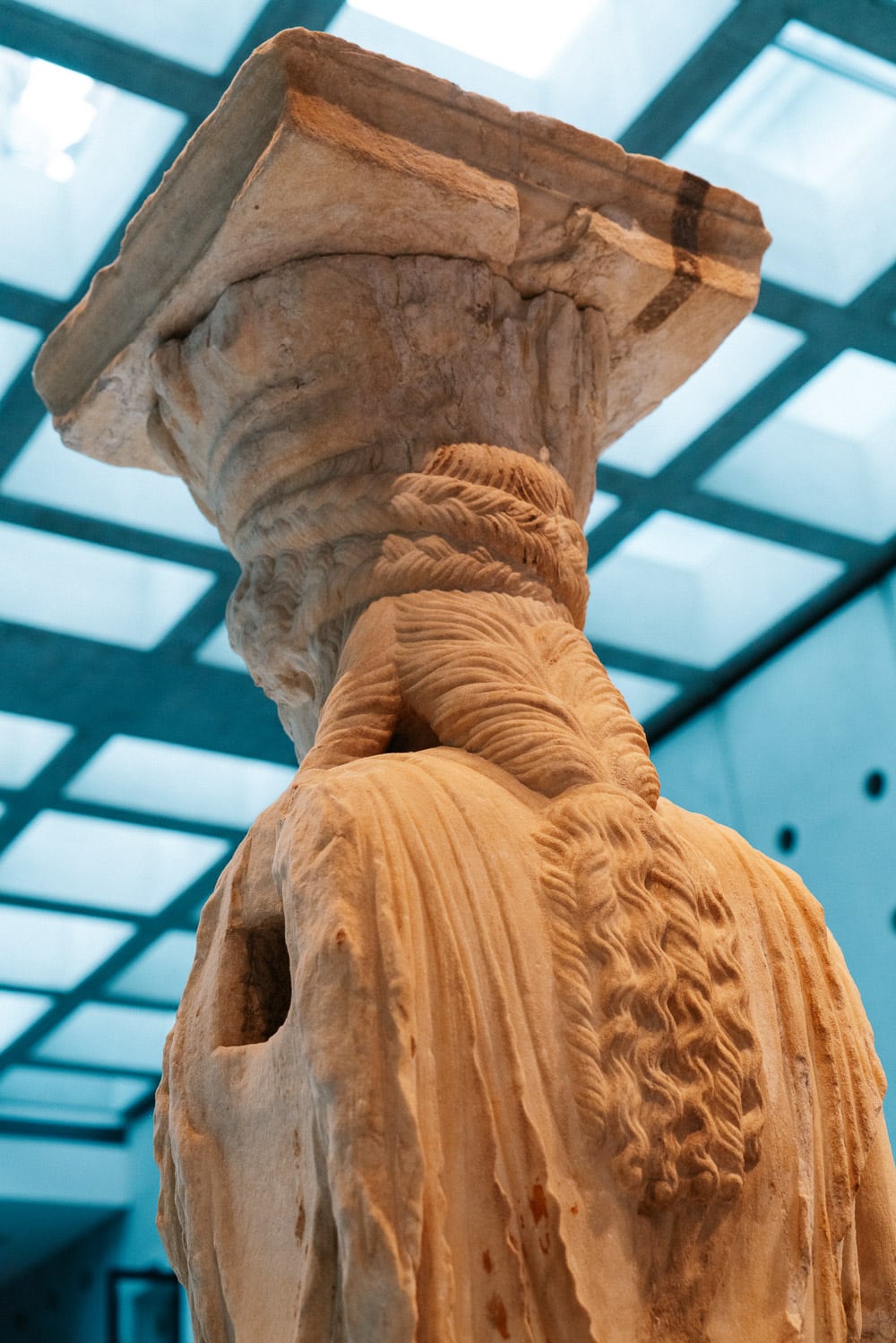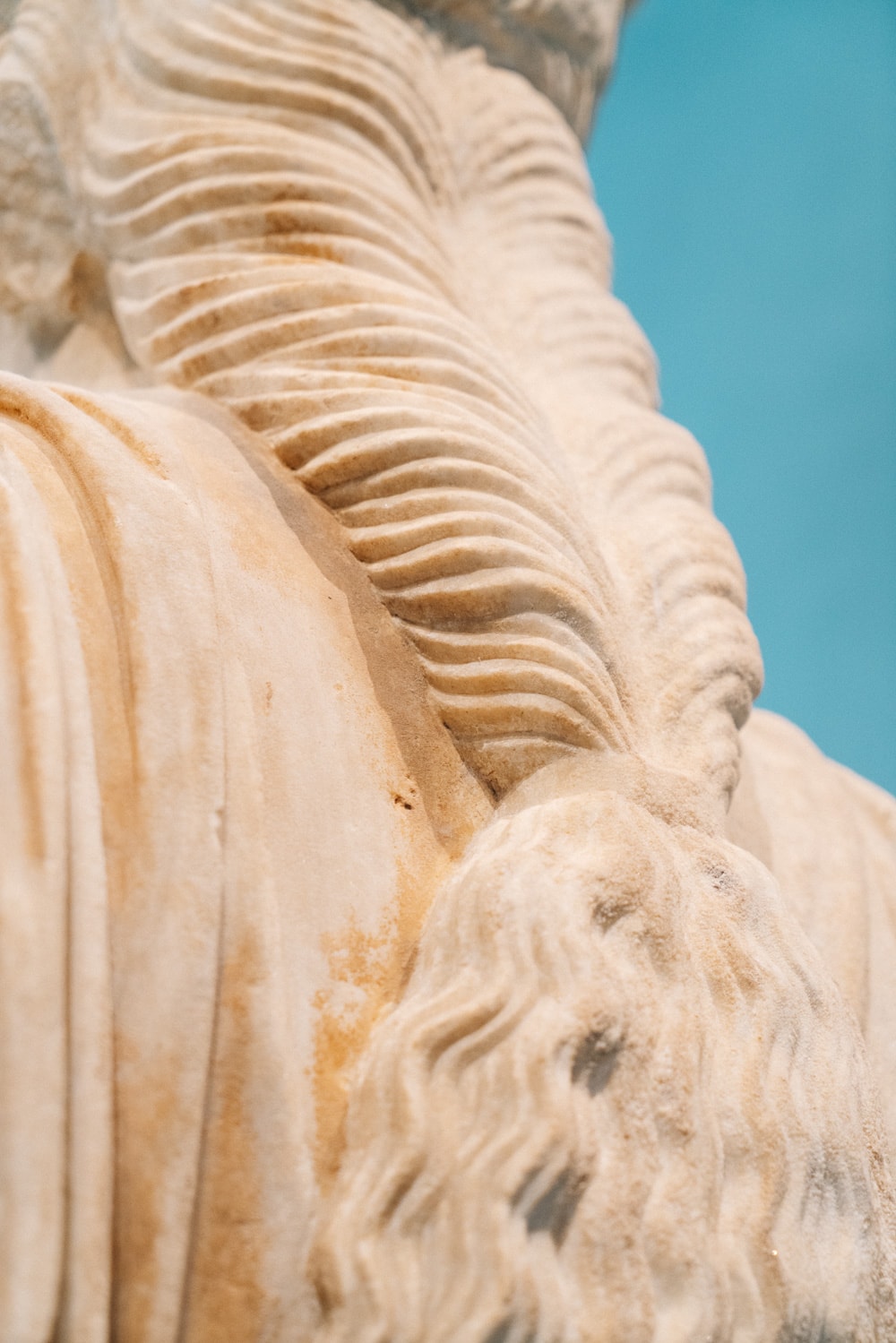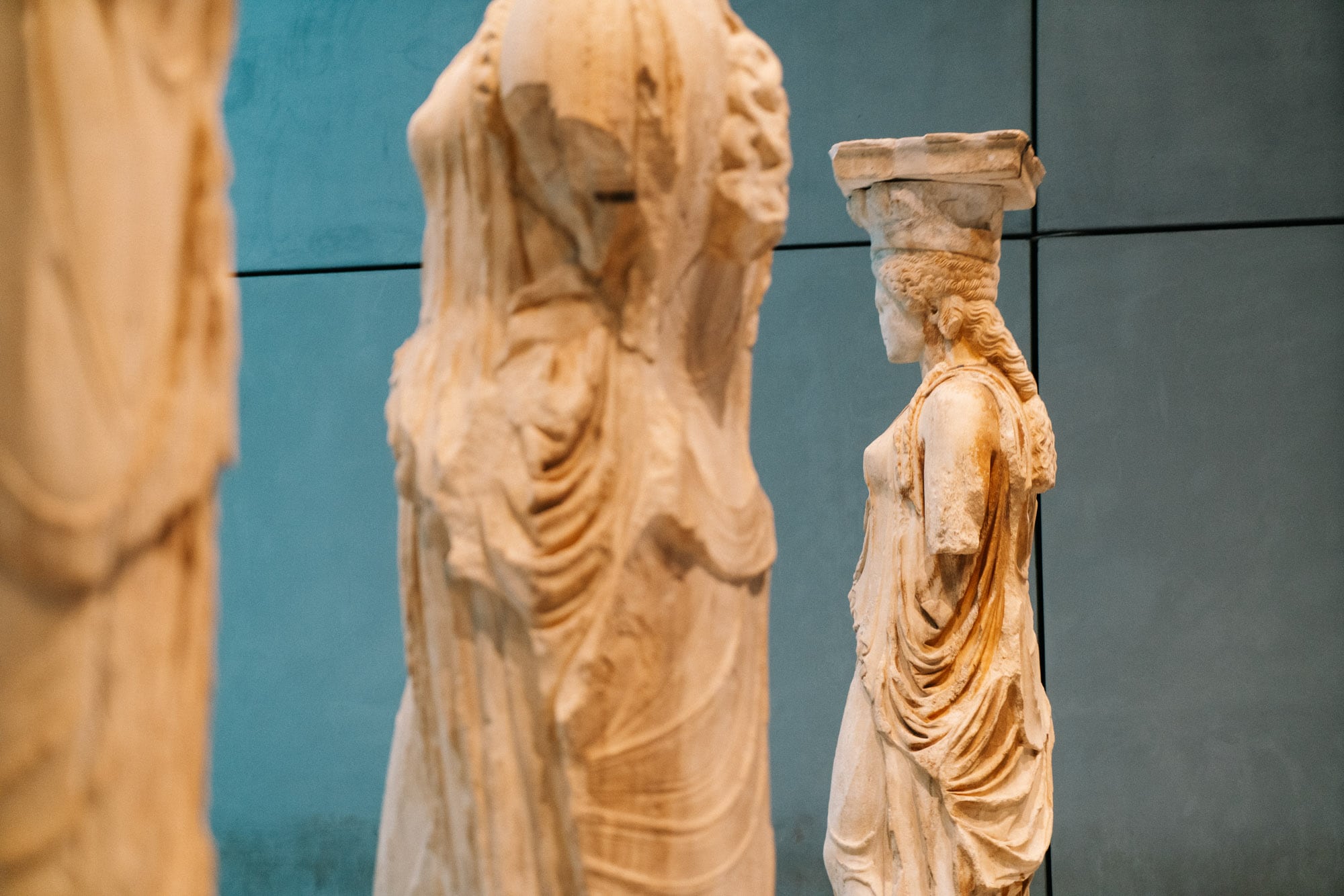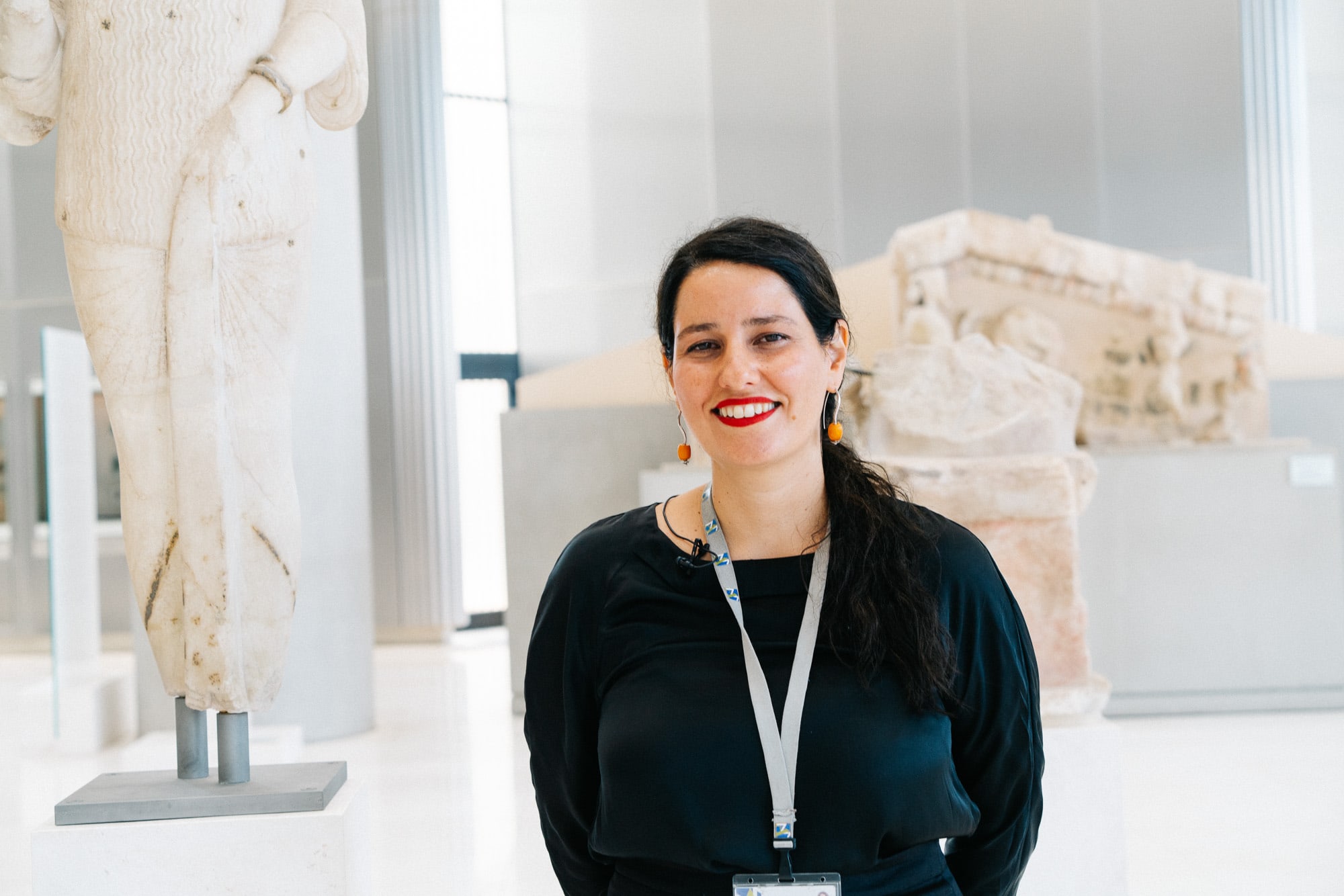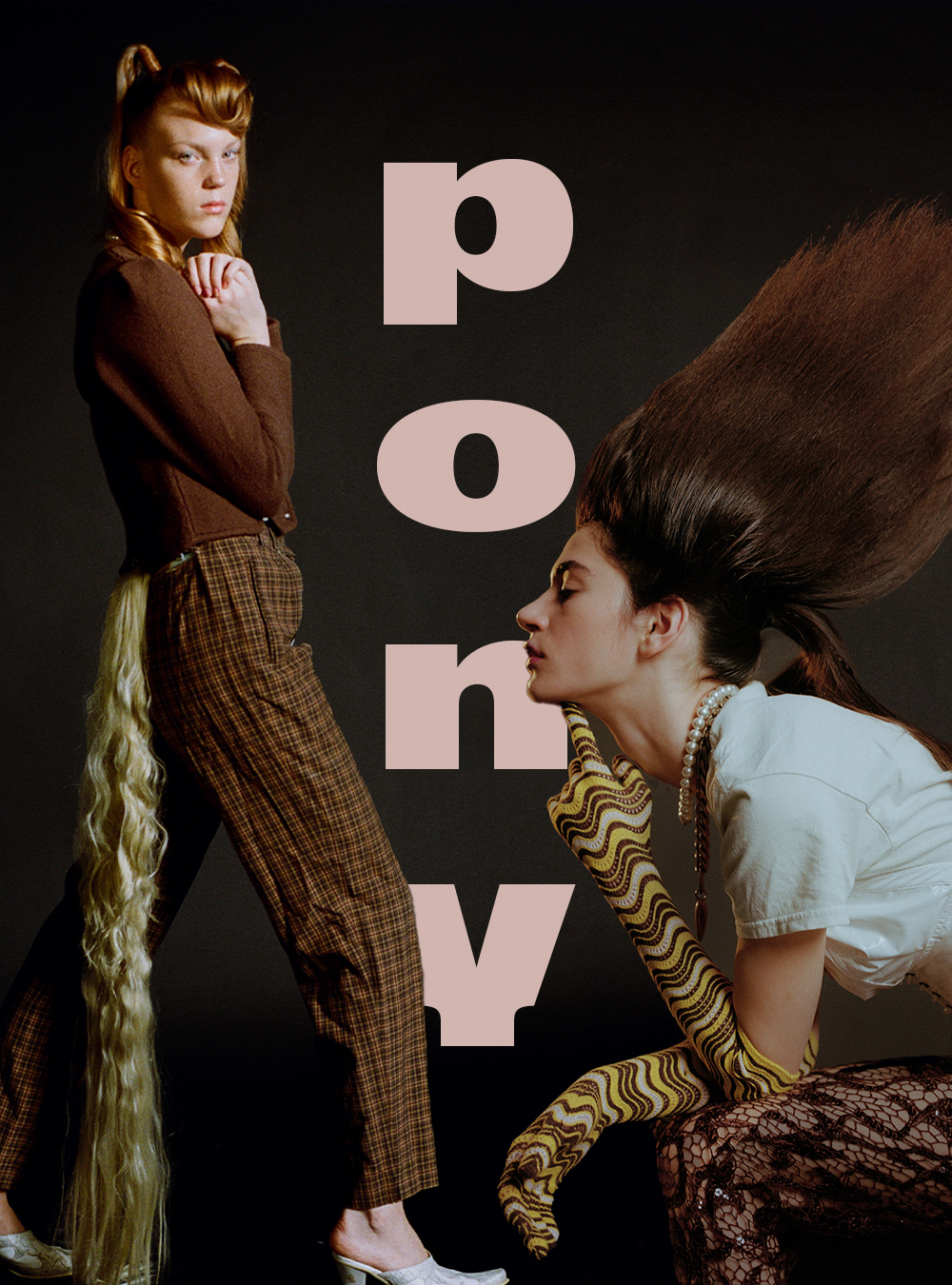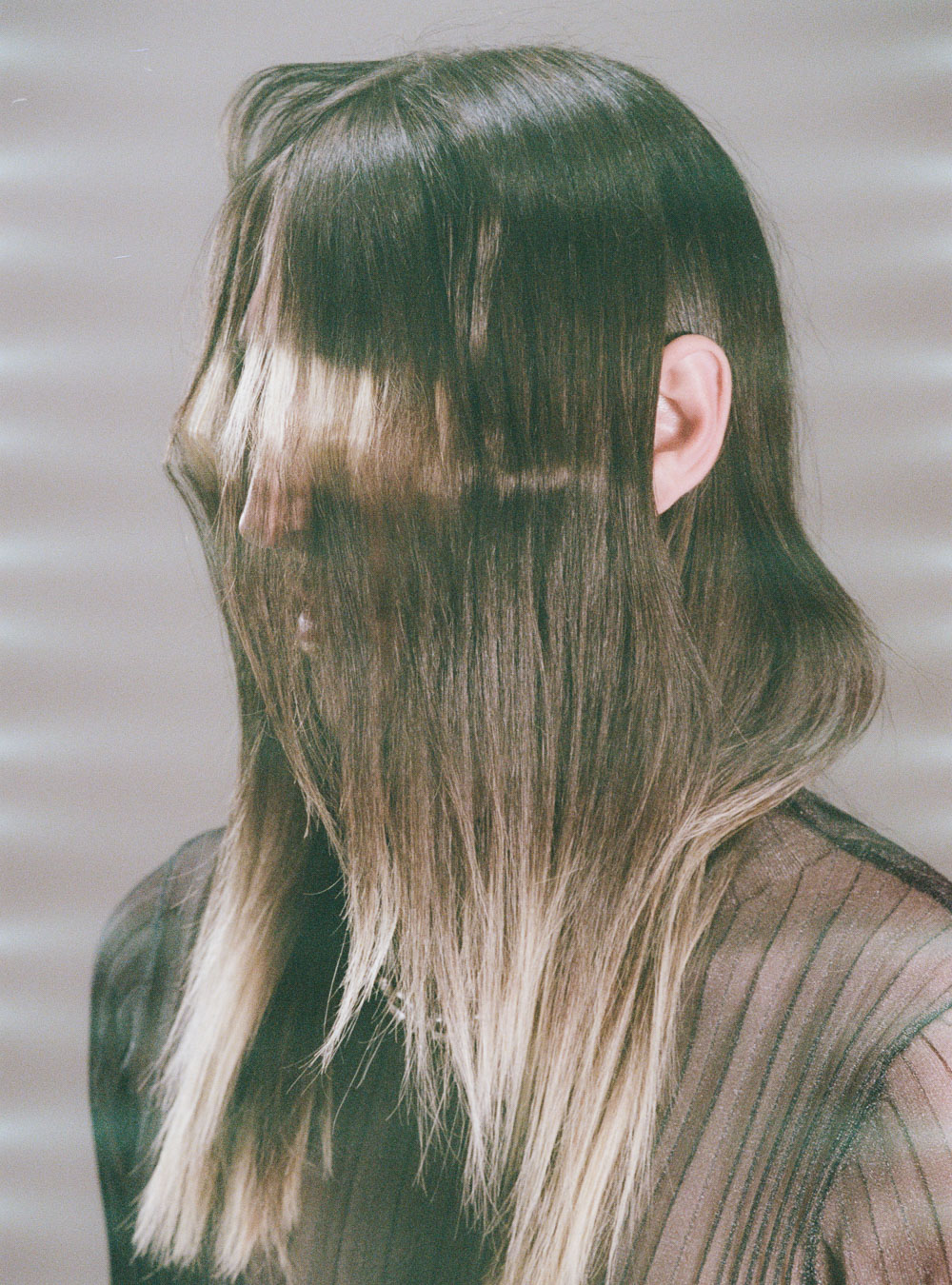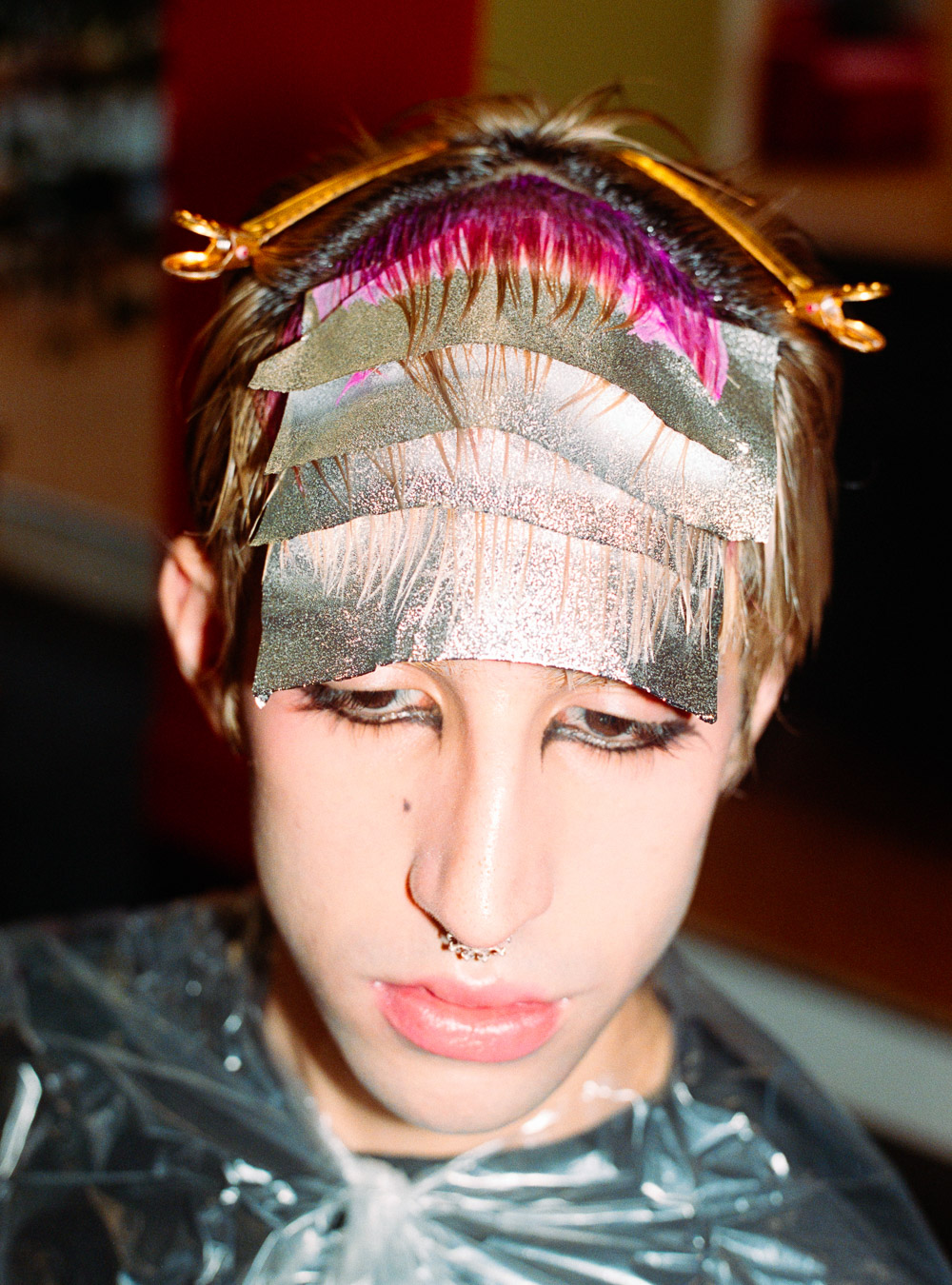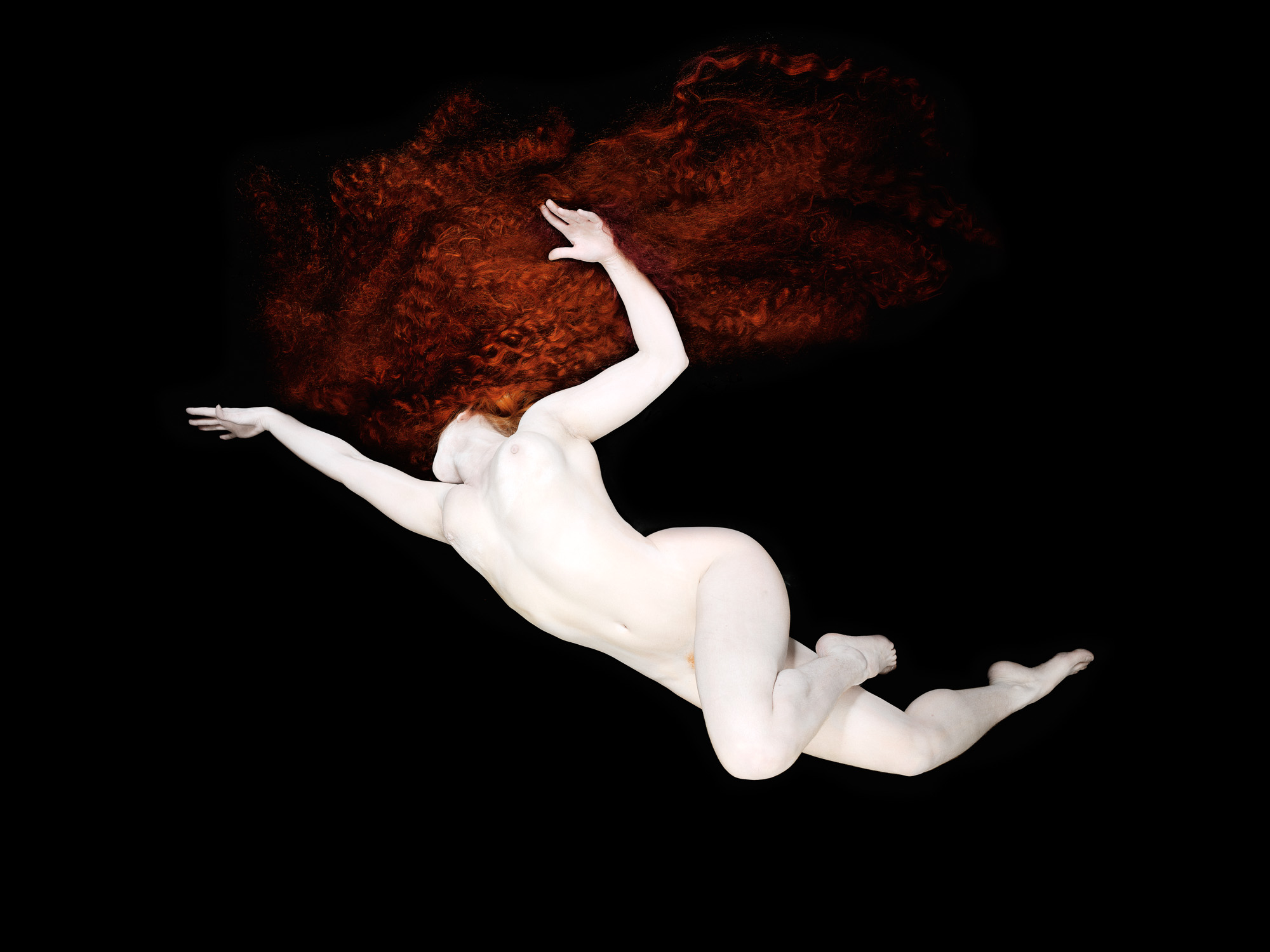ART+CULTURE: Anastasia Eleftheriou visits the Acropolis Museum in Athens to learn about the hairstyles fashioned by Greek statues
Interview + film edit: Anastasia Eleftheriou
Filming: Aris Akritidis
Photos: Panos Damaskinidis
Words: Katharina Lina
Special Thanks to Acropolis Museum and Lina Kokkinou
Last year, Anastasia Eleftheriou and our INFRINGE team visited the Acropolis Museum in Athens, to learn about the significance of hair on the influential marble statues of Ancient Greece. Eleftheriou interviews expert and archeologist Lina Kokkinou who guides us through the museum and sheds light on some of these hairstyles dating back a whopping 2500 years and more.
The first statue we visit is of an unknown female from the 6th century BC. Coming out of a classic centre split, hair frames the face forming waves (not dissimilar to what we know as finger waves) down each side of the forehead before being tucked behind the ears. Reemerging from below the ear, four tresses on each side fall forwards across the collarbones, while 12 defined locks of wavy hair fall neatly onto the back.
Later, Kokkinou shows us a different statue, this time from the 5th century BC ‘Caryatides’, famous statues that doubled as columns for the temple Erechtheion. Similarly to the first statue, this one has a braid of hair falling towards the front on each side, suggesting this element of hairstyling was an ongoing trend in ancient Greece. There are highly detailed braids wrapped around the upper half of the back of the head, while the lower half makes one incredibly voluminous braid that ends in free-falling curly locks. The thick, luscious tufts with artistic details innovative for their time symbolise an idea of female beauty, Kokkinou tells us, “We have pieces of information in literary sources, in poems for example, that speak about hair as an element of beauty, for a young girl, a sign of health, and a sign of her attractiveness.”
Kokkinou further explains, “In art, as seen in the 5th century, we have women married with their hair bound up in a bun, or wrapped inside a cloth; and women with long, free or bound hair at the back, that represent unmarried women.” It remains unclear whether these are depictions of Athenian women or goddesses, however we do know that the subject matter of hair was already intellectualised and involved layers of meanings since at least 500BC.
- ANTHROPOLOGY OF HAIR
- ANTHROPOLOGY OF HAIR
- ANTHROPOLOGY OF HAIR
- ANTHROPOLOGY OF HAIR
- ANTHROPOLOGY OF HAIR
